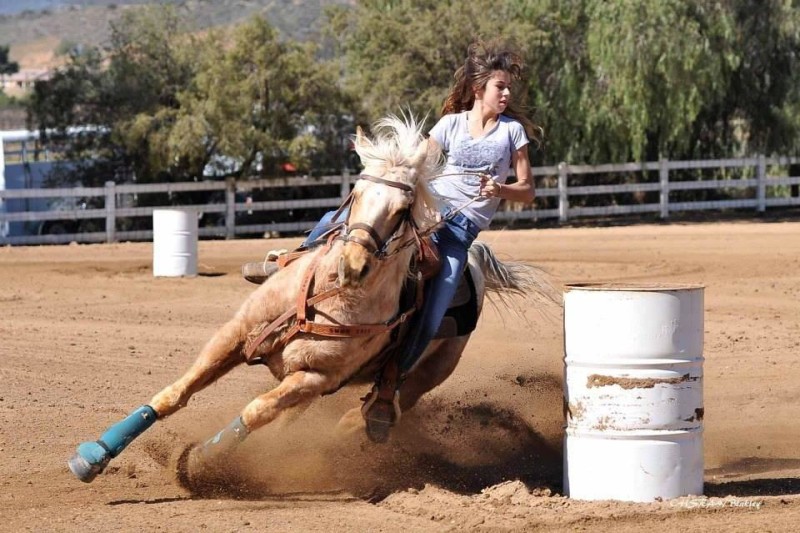“How in the world can you consider having something that is totally out of a school district’s ability to oversee get credit?” said Keith Johannes, with the California Association for Health, Physical Education, Recreation and Dance, a membership organization for P.E. teachers.
“That physical education matters so little that they would not even care to see what’s going on,” Johannes said. “It is the ultimate put-down for physical education.”
Bill Under Consideration in Sacramento
Now the riders’ quest for physical education credit, and the privileges such credit would bring, has captured the attention of state Sen. Jean Fuller (R-Bakersfield).
Fuller, who said she grew up in the small Kern County town of Shafter where her No. 1 hobby was a horse, is the author of Senate Bill 138, which would clarify to local school boards that they are free to award high school physical education credit to rodeo competitors, if they would like to do so.
Rodeo competitors say the bill would give them the cherished perquisites enjoyed by other high school athletes who receive physical education credit for their sports: the right to opt out of the state graduation requirement of two years of P.E. instruction; time in their school schedules (because they’re not enrolled in P.E.) to take other requirements or study halls; and, most important, an “allowed absence” when they leave school early to travel to faraway rodeos.
The bill passed the Senate and is scheduled for a July 1 hearing in the Assembly Education Committee.
At a committee hearing this spring, Fuller said a group of high school rodeo competitors approached her in Bishop last year and asked her to bring the bill forward. Their intelligence, fitness and ambition to reach the top of the high school rodeo world impressed her, she said. In the gallery of the hearing room sat about a dozen high school rodeo competitors, in cowboy hats and Western yoke-style shirts.
“I ask you today to look in their eyes to see if we, as adults, should limit them in any way,” Fuller said.
At the hearing, Cindy Lederer, a 35-year veteran teacher of physical education and a representative of the California Association for Health, Physical Education, Recreation and Dance, voiced the group’s “extreme opposition” to the bill.
“California was the first state to mandate physical education minutes at all levels,” Lederer said. “However, those minutes are disappearing, due to the House and Senate who are constantly creating exemptions and passing bills like this one.”
Technically, school boards already have the right to grant physical education credit to rodeo competitors or, for that matter, to any activity the boards deem worthy.
In the Stanislaus County city of Oakdale -- its official slogan is “Cowboy Capital of the World" -- Oakdale High School has recognized rodeo as a sport for 20 years, said Leandra Spence, adviser to the Oakdale High School rodeo club, at the hearing.
But Fuller said school boards would feel more comfortable if rodeo were listed in the regulations along with two other specifically identified activities that can earn physical education credit: Junior Reserve Officer Training Corps and marching band.
Stephanie Nabors raised three high school rodeo competitors in Mariposa, and one of them is now a member of the Fresno State University rodeo team. “I would like them to be treated like any other athlete,” she said. When her daughters missed school on Fridays for a rodeo, they had to take time during the rodeo to complete a written assignment about physical education to pick up the credit.
“These kids are working their butts off,” Nabors said. “It’s 110 degrees. They shouldn’t have to sit down and write a two-page essay because they’re not in a one-hour P.E. class.”
“I think it would help,” Culotta, the 14-year-old rodeo rider, said of receiving P.E. credit for her rodeo practices and competitions. She said she would use the time for homework, which would be useful in the fall when she is a freshman at Saugus High School in Santa Clarita.
Yet even if the bill becomes law, the decision to grant physical education credit will remain up to the local school board. Jeff Hallman, athletic director of Saugus High School, said he’d never heard of P.E. credit for rodeo riders.
“Our district has guidelines about who is able to get out of physical education,” Hallman said. “Unless you’re a world-class athlete going to the Olympics kind of person, you’re probably not going to get out of P.E.”
